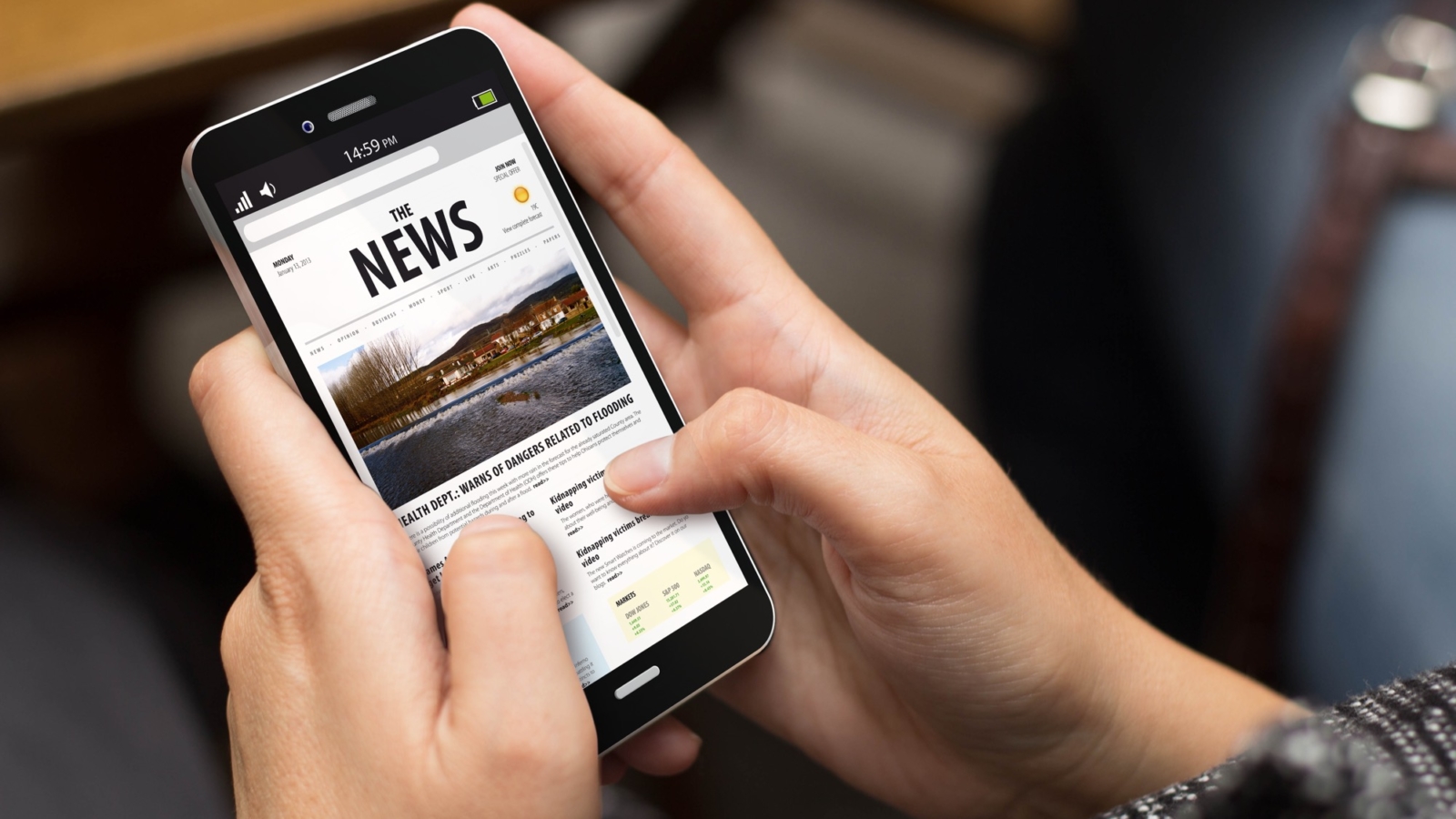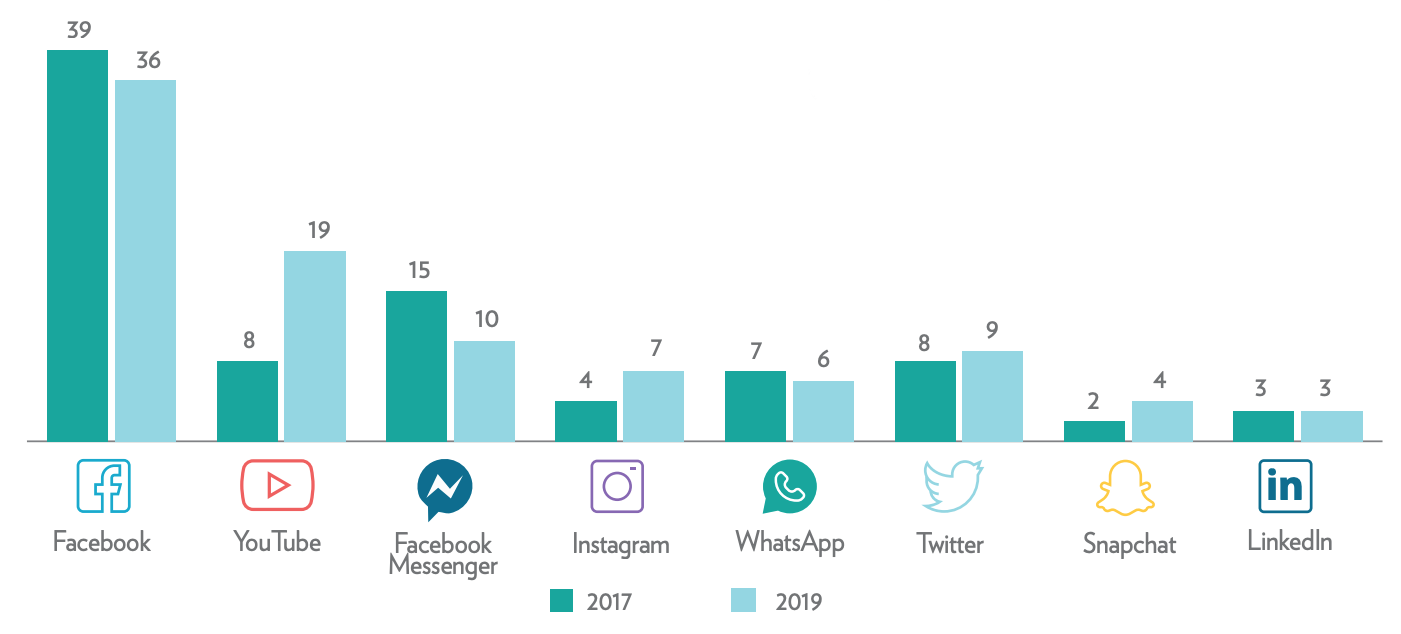The proliferation of fake news and social media platforms’ inability to stamp it out is driving more Australians to engage with online news in private spaces like closed, curated interest groups.
The fifth annual Digital News Report (DNR) produced by the News and Media Research Centre at the University of Canberra was released this week and showed that while Facebook remains the most used social media platform for news, but there has been a small drop in its use for news from 39% in 2017 to 36% in 2019. On the other hand, the use of YouTube, Snapchat and Instagram for news has risen and messaging apps are becoming a popular way to access news.
Key Facts
- Using Facebook for news has decreased since 2016 (-9), while YouTube (+4), Snapchat (+3), and Instagram (+4) have risen.
- There has been a drop in online news engagement across all sharing, commenting and liking activity.
- The most popular mode of sharing news continues to be talking face-to-face with friends and colleagues (37%).
The report showed there has been a slight decline in most types of online news engagement from 2016 to 2019. While 63% of Australian news consumers have engaged in one or more online or offline news-sharing activities, there has been a slight overall drop in the past few years.
SOCIAL MEDIA BRANDS FOR NEWS (%)
SOURCE: The Digital News Report: Australia 2019
This corresponds with a decline in Facebook use for news which the report authors said was possibly due to increased concern about the unreliability of the online information environment. Most online news consumers in Australia (62%) remain concerned about what is real or fake on the internet, which is higher than the global average (55%).
This lack of trust in the quality of news combined with a lack of confidence in expressing views publicly is also leading to lower engagement with ‘sharing’, ‘commenting’ and ‘liking’ of news all falling on recent years.
However, behind closed ‘doors’ where membership is often restricted and comes with community-defined rules of behaviour, it is a different matter.
More than half of Facebook users (59%) say they have joined and participated in a Facebook group and 68% of WhatsApp users says they are involved in a group on WhatsApp. Popular public groups on Facebook and WhatsApp are related to hobbies and local community issues, whereas public groups about news and politics are less popular (7%: Facebook; 6%: WhatsApp).
The rapid growth in the use of social media platforms for accessing news is continually creating an environment where social endorsements or so-called social signals such as comments, ‘likes’, or shares play a key role in the sharing and consumption of online news.
Younger news consumers, Gen Z and Y are more likely to engage with these social endorsements, while sharing a news story via email is more popular among older news consumers.
Key Report Findings
NEWS MEDIA PERFORMANCE
- Two thirds of Australian news consumers (66%) agree the news media keeps them up to date.
- Less than half (45%) agree that journalism is holding the powerful to account.
- 44% agree the news media are often too negative.
- 28% agree the topics chosen by the news media do not feel relevant to them.
POLITICAL ORIENTATION AND NEWS
- Two thirds (65%) have low interest in politics.
- Left-wing news consumers are much more likely to fact-check than right-wing.
- More than half (53%) of right-wing orientated news consumers perceive the news to be too negative compared to 41% of left-wing consumers.
- News consumers who “don’t know” their political orientation use the fewest number of news brands.
PAYING FOR NEWS AND DIGITAL CONTENT
- Paying for online news (14%) is close to the global average (13%).
- More Australians would rather subscribe to video streaming services (34%) than online news (9%).
- There is a gender paying gap; 17% of men pay for online news compared to 10% of women.
- 83% of news consumers encounter unwanted paywalls at least once a month.
FAKE NEWS AND FACT CHECKING
- 62% of Australian online news consumers remain concerned about what is real or fake on the internet.
- 36% of news consumers say they have checked a news story for accuracy.
- 26% of people concerned about fake news have started using more reliable news sources.
- People who access five or more news brands are the most likely to fact-check.
TRUST IN NEWS
- Trust in news has fallen globally, including in Australia.
- Distrust in social media has risen from 45% in 2018 to 49% in 2019 and trust in social media has fallen from 24% to 18%.
- Those who trust news avoid it less and are less worn out by it.
- Trust is much higher among those who access online brands directly (65%).



